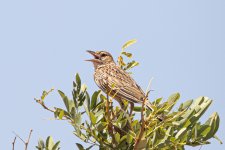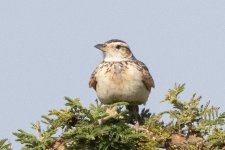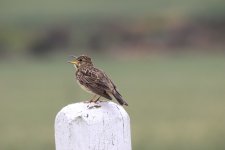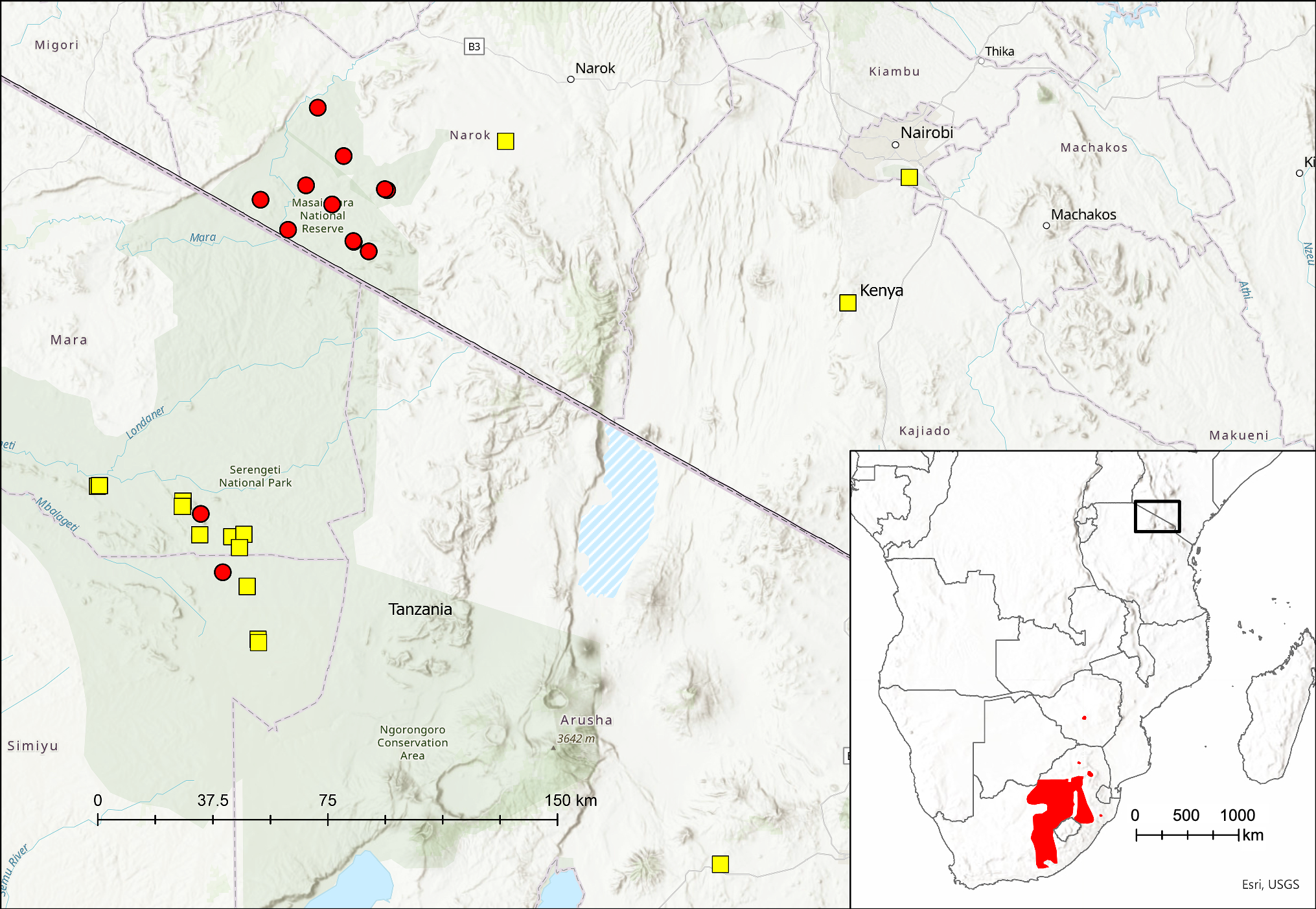Larks don't seem to excite subscribers to this forum, do they?
I don't think it's a question of 'excitement'. It's that the bird is usually fairly obvious on looks or
distribution, so once an ID has been made or agreed, then others will only reply if they think it's a mistake.
For example, in the Mara you have only five possibilities according to 'Birds of East Africa' - Rufous-naped, Flappet, Foxy, Singing Bush and Red-capped.
Despite several visits to the area, I have only seen Flappet a couple of times and Foxy once. I have never seen Singing Bush. Red-capped is quite distinctive. Foxy is the problem versus Rufous-naped (perhaps someone who has seen Foxy more than I have would have less of a problem). But your Singing Bush looks just like the book illustration and not like the others. (Actually, I am not sure that the map in BofEA shows Singing Bush in the Mara, but anyway your bird looks right to me, although other views would also be welcome.)
It's just that they're so difficult and variable
So, in this I disagree with the Fern while also agreeing. Because of light, weather and age, Rufous-naped can indeed have varied appearance. And I think occasional and short-term visitors such as myself are always hoping to find something that is
not-Rufous-naped and we search for features that support this in birds we see. Hence the difficulty. But we are usually wrong.











